SIGGRAPH 2012: In Search of the Miraculous
Chair(s):
Art Papers Chair(s):
- Mine Özkar
-
- Istanbul Technical University
Location:
Los Angeles, California, United States of America
Dates:
August 5th-9th, 2012
Art Show Overview:
Wonderment. Mystery. Awe. Einstein believed these to spark the inspiration of both the arts and sciences. Explored within a conference where terms like Art, Science, and Technology are seemingly interchangeable, this would seem a natural place for an exhibition inspired by the same. Indeed one can trace the history of the museum (both Art and Science) to the 16th century Wunderkammer (“wonder-room”), literal Cabinets (and Rooms) of Curiosity, filled with wondrous and exotic objects from the then still unknown world (combining specimens, diagrams, and illustrations from many disciplines; marking the intersection of science and superstition; and drawing on natural, manmade, and artificial worlds). Ironically, these collections, means by which the unknown was empirically and symbolically conquered, also emancipated these superstitious unknowns of their mysterious auras and solidified them to description. And so it moves, Galileo ungods the cosmos and the world learns to spin to logic and reason. So much so that by the late 18th century the Romantic Movement arose in reaction to the Enlightenment’s scientific rationalization of nature and society, preferring the viscerality of strong emotions (of horror, terror, awe and wonderment) as the only way to have an authentic aesthetic experience. And so this dichotomy is still at hand, empirical rationality now entwined with capitalism’s logic define and optimizes our world, leaving in its wake an alienated society longing to feel something more.
The title of the exhibition, “In Search of the Miraculous,” comes from the final work of the artist Bas Jan Ader (an earnest yet fateful performance that saw the artist lost at sea while attempting a solo journey across the Atlantic Ocean), and shares with it a certain romantic sensibility of both hope and melancholy, of the individual (at once both heroic and tragic) within the universal. It is perhaps strange to title an exhibition with this charge when preceded by a century arguably full of more miracles than humankind has ever encountered, albeit through the innovations of none other than ourselves. But perhaps it is due to such trajectories, in a world shrunk by mediating technologies and copious amounts of data, that one is left thinking, What happens when everything is explained away? In a world of Wikipedias and Wikileaks, of mediated social networks greater than nations and geographies, what remains of that authentic experience? When You Tube bit spectacles and mediated warfare debacles color our experiences, can anything still be held in wonder? Perhaps we are at a particular precipice at this time (modernity, postmodernity, capitalism, communism, democracies, revolutions, oh how you have all let us down), the way things are cannot proceed lest we truly destroy it all. Thus, before we burst forth again with 2.0 solutions for it all, perhaps a repose is required, a momentary prick if you will, to escape the doldrums of the everyday and repower the imagination.
The call for submissions was purposefully ambiguous and unspecific, based not on any particular thematic premise but rather on sentiment; simply an open call for works that both inspire or are inspired by moments of awe, surprise, mystery and wonder. The works selected for the Art Gallery by the 2012 jury are simply a reflection of the emergent aesthetic zeitgeist, a collection of 12 artworks each in their own manner reflecting on the wondrous. Interestingly in a ubiquitously digital world, many of the works move towards the physical and analog. Not a turn towards ludditery (many projects are quite technically complex) but perhaps a reflection of a pervasive ennui for the digital. Certain themes also emerge; nostalgia, for places been or places imagined, for the aura of the pre-cinematic now lost to mass media; reflections on time, stilled for infinity or moved by heartbeats; relationships, of the real and virtual, or imaged as moments between; and of the laboratory, turned inside out, revealing itself as aesthetic matter. But as one reflects on this 21″ century Wunderkammer, what echoes most profoundly is that the miraculous is no longer to be found out there but is simply the reflections from within. Call me a heretic but Galileo was wrong – we are the center of the universe.
Osman Khan, University of Michigan
SIGGRAPH Conference Arts Director
Elana Van Gent
Art Papers Jury
Ronen Barzel
Onur Yüce Gön
Tad Hirsch
M. Nyssim Lefford
John Marshall
Teri Rueb
Victoria Szabo
In Search of the Miraculous Gallery Chair
Osman Khan
In Search of the Miraculous Gallery Jury
Cezanne Charles
Nick Hasty
Mona Kasra
Daniel Sauter
Basak Senova
Art Show Jury:
- Cézanne Charles
-
- ArtServe Michigan
- Nick Hasty
- Mona Kasra
-
- University of Virginia
- Daniel Sauter
- Başak Şenova
-
- Koç University
Art Show Reviewers:
- Bonnie L Mitchell
-
- Bowling Green State University
Art Papers Jury:
- Ronen Barzel
- Onur Yuce Gun
-
- Kohn Pedersen Fox Associates
- Tad Hirsch
-
- University of Washington
- M. Nyssim Lefford
- John Marshall
-
- University of Michigan
- Teri Rueb
-
- State University of New York, Buffalo
- Victoria Szabo
-
- Duke University
Exhibition Artworks:
-

90° South
[Alejandro Borsani]
Categories: [Installation] -
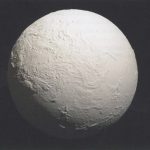
A Planetary Order
[Martin John Callanan]
Categories: [3D & Sculpture] -
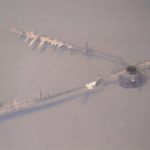
Biopoiesis
[Steven J Barnes] [Carlos Castellanos]
Categories: [Installation] -

Coronado
[Kian-Peng Ong]
Categories: [3D & Sculpture] [Sound Art] -
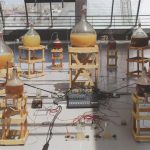
Kapitän Biopunk: Fermentation Madness
[Julian Abraham]
Categories: [Installation] [Sound Art] -
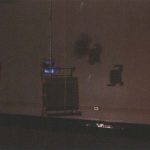
Saturation
[Daniel Barry] [Adam Laskowitz]
Categories: [Installation] -
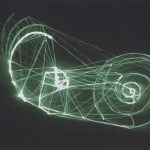
Snail Trail
[Philipp Artus]
Categories: [Animation & Video] -
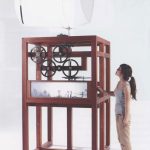
Sustainable Cinema No. 4: Shadow Play
[Scott Hessels]
Categories: [3D & Sculpture] -
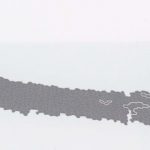
SymbiosisS
[Kärt Ojavee] [Eszter Ozsvald]
Categories: [Interactive & Monitor-Based] -
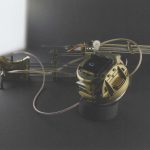
Tardigotchi
[SWAMP]
Categories: [Interactive & Monitor-Based] -
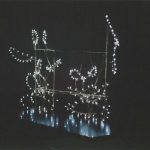
The Galloping Horse
[Rémi Brun]
Categories: [3D & Sculpture] -
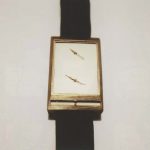
The HeartBeats Watch
[Julie Legault]
Categories: [Design]
Exhibition Writings and Presentations:
-
Title:
Entr’acte
Author(s):
Category: Paper
Abstract Summary:
Looking at new public-space formations today, the roles of new technologies grow not only prominent but also noticeably time-sensitive. Due in part to the rapidly changing nature of communications media and the diverse stakeholders, the theatrical “entr’acte” appears to be an apt model for forms and durations of public space with diverse performers (both human and material elements) of different sorts: entr’acteurs. How is public space as physical construct changing with new embedded forms of computing? How is a public formed? What new material sensibilities emerge? And what role does their essentially fleeting or transitional character play?
Title: From Wunderkammern to Kinect – The Creation of Shadow Worlds
Author(s):
Category: Paper
Abstract Summary:
This paper focuses on two projects, Still Life No. 1 and Shadow Worlds | Writers’ Rooms [Brontë Parsonage], to reveal the creative approaches the authors take to site, technology, and the self in their production of shadow worlds as sites of wonder. Informed by the uncanny (re-animation and the double) and an interest in the limen (thresholds in the real and virtual realms), the projects explore white light and infrared digital 3D scanning technologies as tools for capture and transformation. The authors will discuss how they suture the past with the present and ways that light slips secretly between us, revealing other realms.
Title: Soundspheres: Resonant Chamber
Author(s):
Category: Paper
Abstract Summary:
This paper develops a brief historical account of the architectural development of auditory space and identifies the “soundsphere” as an acoustic project that connects the interrelationships between material, spatial form and sound. The instrumental design of the soundsphere has focused on three types of shells: hard, static, and inflexible; physically manipulable; and immaterial (or electroacoustic). This frames a disciplinary and historical context for Resonant Chamber, a prototype-based design research project that develops a kinetic and interactive interior envelope system aimed at transforming the acoustic environment through dynamic spatial, material, and electroacoustic technologies.
Title: Translation + Pendaphonics = Movement Modulated Media
Author(s):
Category: Paper
Abstract Summary:
Translation is a multimedia dance performed on a vertical wall filled with the projected image of a lunar surface. Pendaphonics is a low-cost, versatile, and robust motion-sensing hardware-software system integrated with the rigging of Translation to detect the dancers’ motion and provide real-time control of the virtual moonscape. Replacing remotely triggered manual cues with high-resolution, real-time control by the performers expands the expressive range and ensures synchronization of feedback with the performers’ movements. This project is the first application of an ongoing collaboration between the Motivational Environments Research Group at Arizona State University (ASU) and STREB Extreme Action Company.
Title: Within an Ocean of Light: Creating Volumetric Lightscapes
Author(s):
Category: Paper
Abstract Summary:
This paper documents explorations into an alternative platform for immersive and affective expression within spatial mixed reality installation experiences. It discusses and analyzes experiments that use an advanced LED cube to create immersive, interactive installations and environments where visitors and visuals share a common physical space. As a visual medium, the LED cube has very specific properties and affordances, and optimizing the potential for such systems to create meaningful experiences presents many interlinked challenges. Two artworks exploring these possibilities are discussed. Both have been exhibited internationally in a variety of settings. Together with this paper, the works shed some light on the design considerations and experiential possibilities afforded by LED cubes and arrays. They also suggest that LED grids have potential as an emerging medium for immersive volumetric visualizations that occupy physical space.




